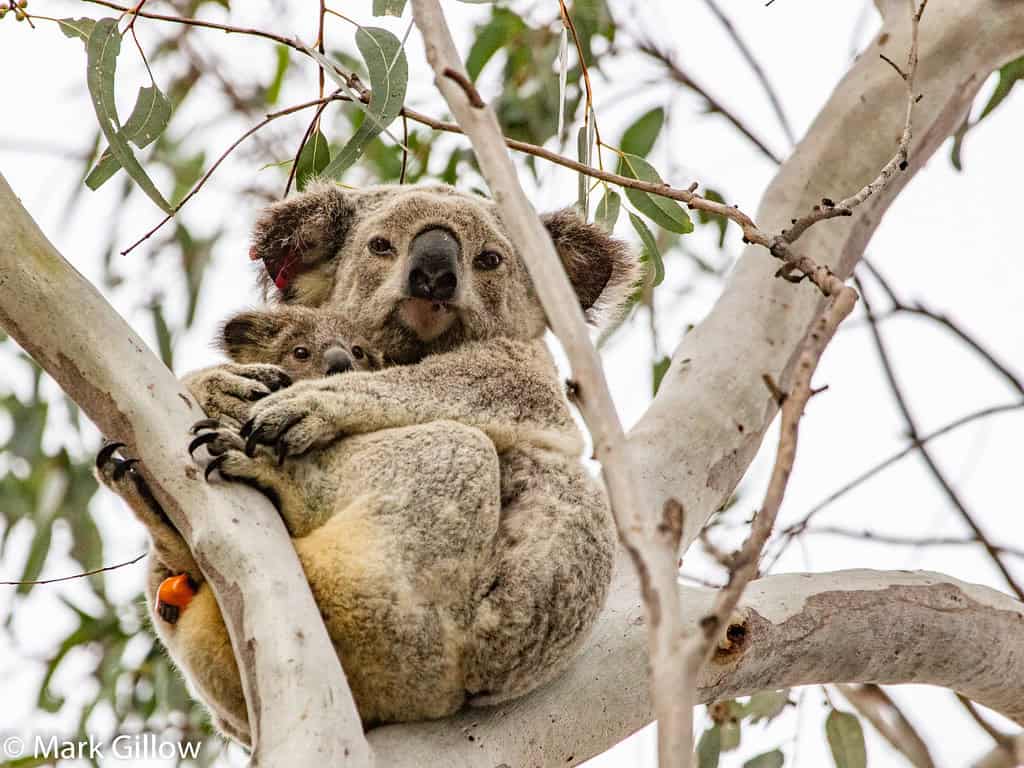Marsupials, a distinctive group of mammals found primarily in Australia and the Americas, are characterized by their specialized reproductive strategy involving pouches. Unlike placental mammals that develop their young extensively in the womb, marsupials give birth to relatively underdeveloped offspring that continue their development externally, typically within a protective pouch called a marsupium. This evolutionary adaptation allows female marsupials to invest less energy in pregnancy while still providing protection and nourishment to their developing young.
Both koalas (Phascolarctos cinereus) and kangaroos (family Macropodidae) are iconic Australian marsupials that utilize pouches for offspring development. However, despite sharing this common marsupial feature, their pouches have evolved with significant structural and functional differences that reflect their distinct ecological niches, locomotion patterns, and lifestyles. These adaptations highlight how evolution has fine-tuned the marsupial pouch to meet the specific needs of different species, making the koala’s pouch particularly unique compared to that of kangaroos.
Directional Orientation: The Backward-Facing Pouch

One of the most striking differences between koala and kangaroo pouches is their directional orientation. The koala’s pouch opens toward the rear of the body, facing downward when the animal is in its typical upright, sitting position among tree branches. This backward-facing orientation stands in stark contrast to the kangaroo’s forward-facing pouch, which opens toward the head of the animal. The koala’s unique pouch direction is a specialized adaptation directly related to its arboreal (tree-dwelling) lifestyle.
This rear-facing orientation serves a crucial protective function for koala joeys (baby koalas). As koalas spend most of their time climbing and sitting in eucalyptus trees, a downward-facing pouch prevents the joey from falling out during the mother’s vertical movements through the tree canopy. While this arrangement might seem counterintuitive at first glance, it perfectly suits the koala’s need to maneuver through branches while keeping its young secure, demonstrating how form follows function in evolutionary adaptations.
Muscular Structure and Sphincter Adaptations
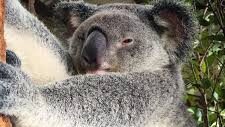
The muscular structure of the koala’s pouch features a strong sphincter muscle that keeps the opening tightly closed when needed. This powerful sphincter serves as an effective safeguard, preventing the joey from accidentally slipping out during the mother’s climbing activities. The muscle can contract with significant force, creating a secure seal around the pouch opening that maintains a stable environment for the developing joey despite the mother’s various movements and positions while navigating through trees.
Kangaroos, by comparison, have a more relaxed pouch opening with less pronounced sphincter muscles. Their forward-facing pouch relies more on gravity and the animal’s upright posture to keep joeys secure. When a kangaroo is hopping, the natural momentum pushes the joey deeper into the pouch rather than outward. This fundamental difference in muscular adaptation highlights how each species’ pouch has evolved to accommodate their distinctive modes of locomotion—arboreal climbing for koalas versus terrestrial hopping for kangaroos.
Internal Architecture and Spatial Design
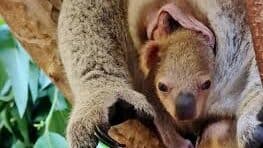
The internal architecture of a koala’s pouch is relatively simple compared to a kangaroo’s more complex design. The koala pouch forms a single, compact chamber that comfortably accommodates just one joey at a time. This chamber is lined with soft skin and contains two teats that provide nourishment to the developing offspring. The compact nature of the koala’s pouch reflects both the animal’s relatively small body size and its need to maintain a streamlined profile while moving through narrow branches and tree forks.
Kangaroo pouches, on the other hand, are more spacious and can accommodate multiple joeys at different developmental stages simultaneously. A female kangaroo can have one joey attached to a teat in the pouch, another embryo in diapause (suspended development), and an older joey that has left the pouch but still returns to nurse. This remarkable capacity for raising offspring at different developmental stages—known as asynchronous breeding—is facilitated by the kangaroo’s larger, more expandable pouch design and is not observed in koalas, whose reproductive strategy involves raising only one joey at a time.
Cleanliness Mechanisms and Hygiene Adaptations
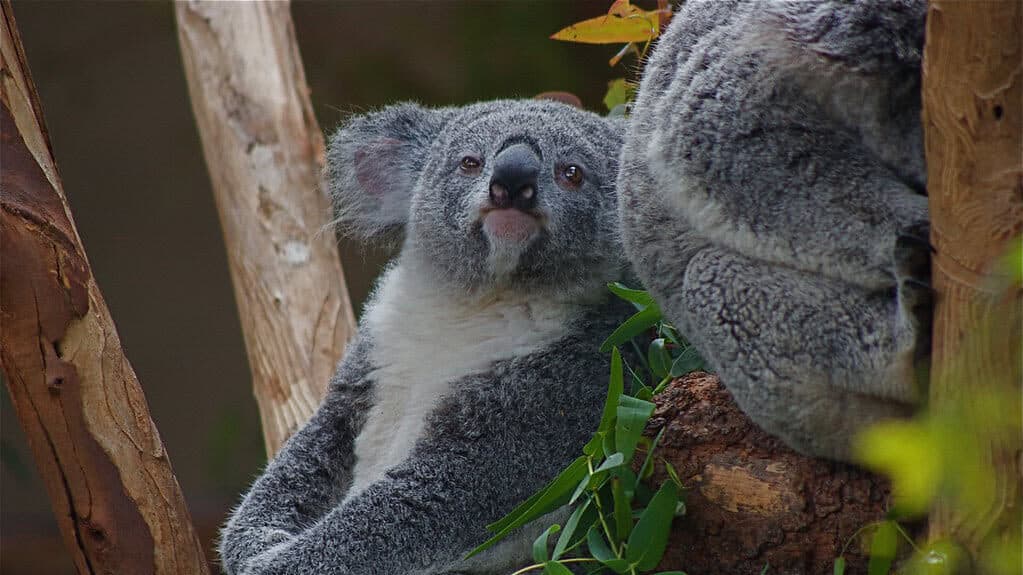
Koalas have developed specific adaptations for maintaining pouch cleanliness that differ from those of kangaroos. A mother koala regularly cleans her pouch using her snout and tongue, particularly before the birth of a new joey. This behavior ensures the pouch environment remains hygienic for the vulnerable newborn. The backward-facing orientation of the koala’s pouch also contributes to cleanliness by reducing the amount of debris that might otherwise enter the pouch opening during the koala’s daily activities among leafy eucalyptus branches.
Kangaroos employ different cleansing techniques for their forward-facing pouches. They use their forelimbs and tongue to clean their pouches, and the different orientation means they face different hygiene challenges. The kangaroo’s terrestrial lifestyle exposes the pouch to different contaminants compared to the arboreal koala. Both species’ cleaning behaviors represent crucial maternal investments that ensure optimal developmental conditions for their young, though the specific mechanisms have evolved to address the distinct environmental challenges each species encounters.
Teat Configuration and Lactation Specializations

The koala’s pouch contains just two teats, reflecting the species’ strategy of raising only one joey at a time. This limited number of teats is sufficient for the koala’s reproductive pace, which typically involves producing one offspring per breeding season. The milk produced by koala mothers changes in composition as the joey develops, gradually shifting from a high-protein formula that supports rapid early development to a composition that helps the joey transition to a eucalyptus leaf diet—a nutritional adaptation specifically evolved for their specialized herbivorous lifestyle.
Kangaroos, by contrast, possess four teats within their pouches, though typically only one or two are active at any given time. This configuration supports their ability to nurture joeys at different developmental stages simultaneously. Perhaps most remarkably, kangaroos can produce different milk compositions from adjacent teats at the same time, with one teat providing milk suited for a newborn joey while another delivers milk appropriate for an older joey. This astonishing ability to tailor milk composition to different developmental needs simultaneously is not observed in koalas and represents one of the most sophisticated lactation adaptations in the animal kingdom.
Temperature Regulation and Thermal Properties
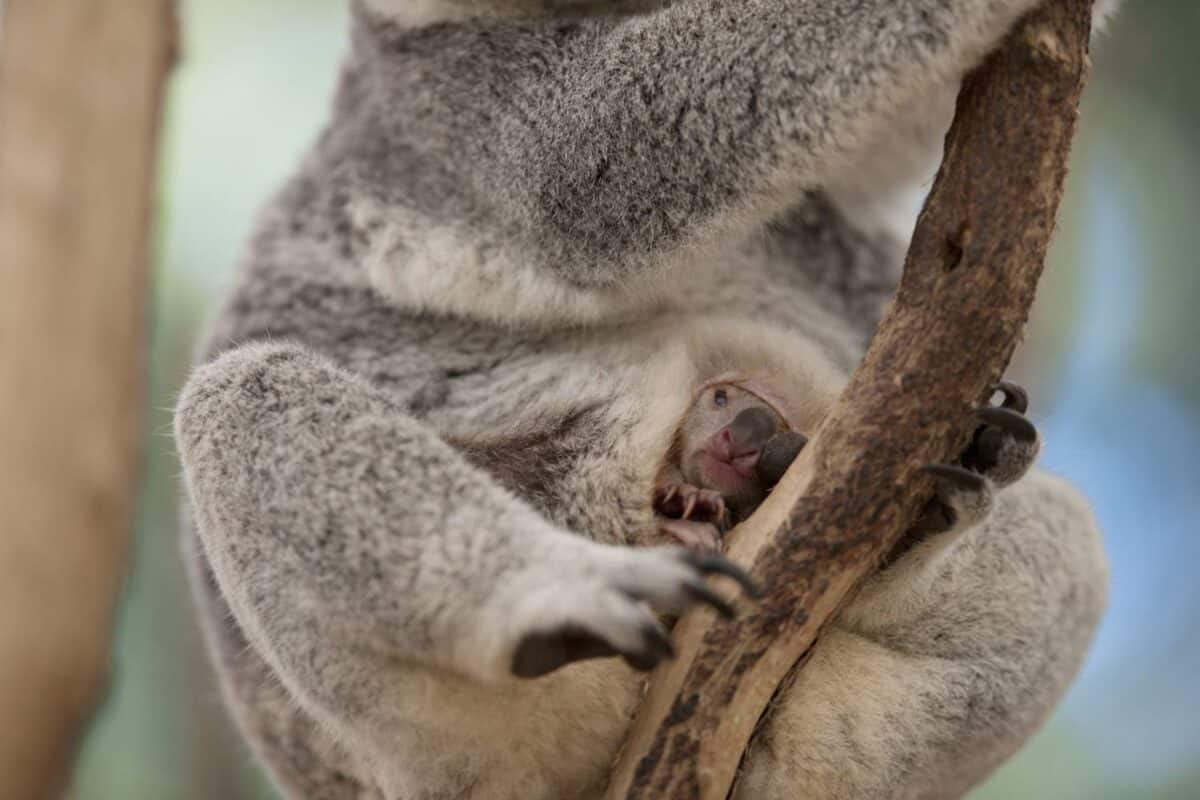
The koala’s pouch serves as a sophisticated microenvironment with important thermal regulatory properties. The relatively small, enclosed pouch chamber maintains a stable temperature that protects the developing joey from external temperature fluctuations. This thermal stability is crucial for the proper development of the immature joey, which is born in an extremely underdeveloped state after just 34-36 days of gestation. The pouch provides the warm, controlled environment needed for the joey to continue its development, functioning effectively as an external womb.
Kangaroo pouches similarly provide temperature regulation but may experience more temperature variation due to their larger opening and the kangaroo’s ground-dwelling lifestyle, which exposes them to greater environmental temperature fluctuations. Both species’ pouches include specialized skin with blood vessels that help regulate temperature, but the compact nature of the koala’s pouch potentially offers more consistent thermal protection. This difference reflects the varying environmental challenges faced by tree-dwelling versus ground-dwelling marsupials and highlights how pouch adaptations extend beyond mere physical protection to include sophisticated physiological functions.
Joey Development and Pouch Residency Period

Koala joeys remain in their mother’s pouch for approximately six to seven months, a period during which they undergo significant development from a tiny, hairless embryo-like creature to a more recognizable miniature koala. During the early stages, the joey remains permanently attached to one of the teats in the pouch, receiving continuous nourishment. As development progresses, the joey begins to peek out of the pouch around five to six months of age, gradually spending more time outside the pouch while still returning for feeding and protection until it’s ready for complete independence.
Kangaroo joeys typically spend longer periods in the pouch—approximately 8 to 12 months depending on the species—reflecting their different developmental trajectory and the challenges of their terrestrial lifestyle. The extended pouch residency for kangaroos allows their young to develop the strong legs and coordination needed for hopping before permanently leaving the pouch. This difference in pouch residency periods between koalas and kangaroos demonstrates how each species’ reproductive strategy has been fine-tuned to prepare offspring for the specific ecological niche they will occupy as adults.
Protection Against Predators and Environmental Hazards
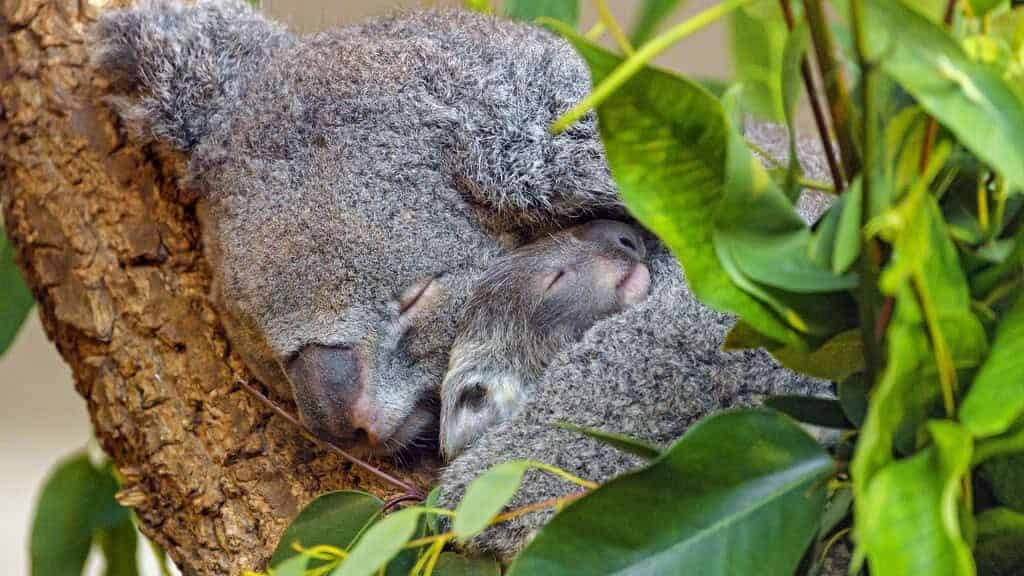
The koala’s rear-facing pouch offers specialized protection against the unique hazards of an arboreal lifestyle. Beyond preventing falls during climbing, the tightly sealed pouch protects the joey from scrapes against rough bark, encounters with irritating plant substances, and exposure to rain that might otherwise soak the vulnerable young. The mother’s instinctive behavior of hugging tree trunks provides additional protection, with her body forming a shield between environmental threats and the pouch opening on her posterior.
Kangaroos’ forward-facing pouches, while differently oriented, provide protection suited to their terrestrial lifestyle. When threatened, a kangaroo mother can leap away at high speed while her joey remains securely nestled in the pouch. During extreme danger, some kangaroo species have been observed removing older joeys from the pouch to improve the mother’s escape speed—a behavioral adaptation not seen in koalas, who cannot quickly evacuate trees and instead rely on camouflage and their elevated position for protection. These different protective strategies illustrate how pouch orientation works in concert with behavioral adaptations to maximize offspring survival in different habitats.
Adapting to Dietary Specialization

The koala’s pouch plays an important role in the offspring’s dietary transition to eucalyptus leaves, a highly specialized and nutritionally challenging food source. Before koala joeys can digest toxic eucalyptus leaves independently, they must acquire the necessary gut microbiome. This crucial microbial community is partially transferred from mother to joey through a specialized form of fecal matter called “pap” that the joey consumes directly from the mother’s cloaca. The pouch provides a protected environment where this dietary transition can occur safely, with the joey making short trips out of the pouch to receive pap before returning to the security of the marsupium.
Kangaroos, with their grass-based diet, have different nutritional challenges for their developing young. Their joeys transition from milk to vegetation through a more gradual process of observational learning and experimentation with plant matter. The kangaroo’s more spacious pouch accommodates this longer transition period, during which joeys increasingly venture out to sample vegetation while still returning to the pouch for protection and supplementary milk feeding. These contrasting approaches to dietary transitions highlight how each species’ pouch has evolved features that facilitate the specific nutritional challenges their offspring must overcome.
Seasonal Variations and Breeding Cycles

The koala’s pouch undergoes physiological changes aligned with the species’ breeding season, which typically occurs from September to March in most Australian regions. Outside of active breeding periods, the pouch may become less developed and the associated glandular tissues less active. However, once breeding season begins, hormonal changes prepare the pouch for potential occupation, increasing blood flow to the area and stimulating the development of glandular tissues that will support the joey’s development. This cyclical pattern of pouch readiness reflects the koala’s relatively straightforward reproductive strategy of raising a single joey approximately every one to two years.
Kangaroos exhibit more complex seasonal adaptations due to their capacity for embryonic diapause—the ability to hold an embryo in suspended development until environmental conditions improve or until the current pouch occupant is ready to leave. This remarkable adaptation means that kangaroo pouches may remain physiologically active for longer periods, maintaining readiness for both current occupants and suspended embryos that could resume development. The physiological mechanisms that support this reproductive flexibility represent one of the most sophisticated adaptations in marsupial reproduction and highlight another fundamental difference between koala and kangaroo pouch functionality.
The koala’s pouch represents an extraordinary example of evolutionary adaptation perfectly tailored to the species’ unique ecological niche and lifestyle requirements. From its backward-facing orientation and strong sphincter muscles to its compact internal architecture and specialized cleanliness mechanisms, every aspect of the koala’s pouch has been shaped by natural selection to enhance joey survival in an arboreal environment. These adaptations stand in marked contrast to the kangaroo’s forward-facing, more spacious pouch that accommodates multiple joeys and facilitates a terrestrial lifestyle.
These differences between koala and kangaroo pouches demonstrate the remarkable plasticity of the marsupial reproductive strategy, showing how the basic marsupium concept has been refined and specialized across different lineages to meet diverse ecological challenges. The specific adaptations seen in the koala’s pouch highlight the precision with which evolution can fine-tune reproductive structures to address the particular demands of specialized lifestyles. By comparing these two iconic Australian marsupials, we gain valuable insights into the powerful forces of natural selection and the incredible diversity of solutions that evolution can produce even within a single reproductive strategy.
The unique features of the koala’s pouch not only ensure the survival of this beloved species but also provide scientists with fascinating opportunities to study specialized adaptations. As koalas face increasing threats from habitat loss, disease, and climate change, understanding the intricacies of their reproductive biology becomes ever more important for conservation efforts. The remarkable specialization of the koala’s pouch serves as a powerful reminder of the vulnerability of highly adapted species to environmental change and underscores the importance of preserving the specialized habitats on which such finely tuned evolutionary adaptations depend.
- The World’s Most Poisonous Frog Can Kill Ten Men with One Touch - August 21, 2025
- Why Elephants Mourn Their Dead Just Like Humans Do - August 21, 2025
- Where to Watch Wild Horses Run Free in the U.S. - August 21, 2025

